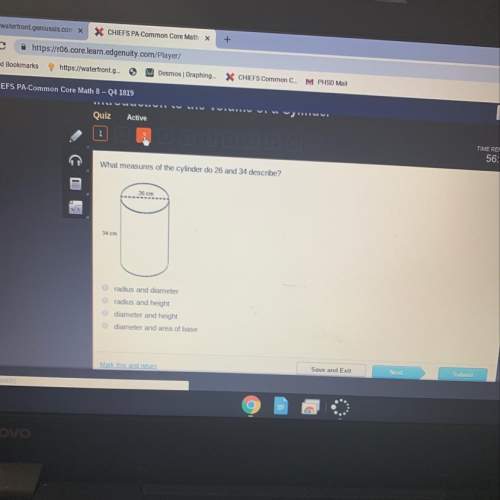
Mathematics, 27.11.2020 01:00, brendasortocortez
Consider a population proportion p = 0.62.a-1. Calculate the expected value and the standard error of P−P− with n = 30. (Round "expected value" to 2 decimal places and "standard deviation" to 4 decimal places.)a-2. Is it appropriate to use the normal distribution approximation for P−P− ?YesNob-1. Calculate the expected value and the standard error of P−P− with n = 34. (Round "expected value" to 2 decimal places and "standard deviation" to 4 decimal places.)b-2. Is it appropriate to use the normal distribution approximation for P−P− ?YesNo

Answers: 1
Other questions on the subject: Mathematics

Mathematics, 21.06.2019 19:00, autumn8668
Stefano accidentally dropped his sunglasses off the edge of a canyon as he was looking down. the height, h(t), in meters (as it relates to sea level), of the sunglasses after t seconds, is shown in the table. during its descent, the pair of sunglasses passed by a climber in the canyon 6 seconds after stefano dropped them. to the nearest meter, what is difference in elevation between stefano and the climber? 166 meters 176 meters 230 meters 240 meters its b.176 i took the test 166 is wrong and 176 is correct
Answers: 1

Mathematics, 22.06.2019 00:30, anytka21ovxqoa
Which ordered pair is a solution of the equation? 2x+3y=10
Answers: 1


Do you know the correct answer?
Consider a population proportion p = 0.62.a-1. Calculate the expected value and the standard error o...
Questions in other subjects:

Biology, 24.06.2019 05:30


Arts, 24.06.2019 05:30


Social Studies, 24.06.2019 05:30




Social Studies, 24.06.2019 05:30







